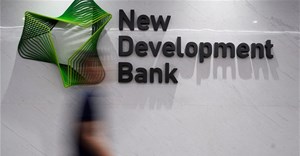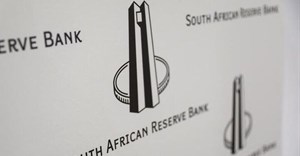Trending
Elections 2024
Jobs
- Accountant Johannesburg
- Branch Accountant Johannesburg North
- Declinations Officer George
- Motor Insurance Claims Consultant George
- Senior Professional Officer Cape Town
- Administrator George
- Business Sales Agent George
- Insurance Sales Agent White River
- Admin and Finance Coordinator Cape Town
- Debtors and Creditors Clerk Pretoria
Generating real returns at low risk in today's economy

We believe the market is not yet pricing in this reality, which is likely to have material implications when considering asset classes that are expected to deliver real returns, at appropriate levels of risk, over the next decade.
Accordingly, fixed income investors need to review their strategy and explore the benefits of multi-asset income funds for generating real returns at low levels of risk.
Where we have come from
Inflation has been on a steady downward trend in the US averaging roughly 4% since the 1970s. However, despite significant monetary policy stimulus by the Federal Reserve, following the Global Financial Crisis, inflation only averaged 1.87% over the past decade (as at August 2021).
It is therefore understandable that investors have become accustomed to persistently low inflation and interest rates in developed markets, while benefitting from steadily falling bond yields and a rise in prices of stocks, which have high growth expectations, and long-term cash flow payback profiles.
Contrast this to South Africa’s inflation targeting journey. Since inflation targeting was implemented in the early 2000s, inflation has averaged close to six percent. Measured monthly however, inflation has been above six percent roughly 46% of the time.
Over the last decade, however, the SARB has credibly managed to reduce both the average inflation rate to five percent as well as the volatility of inflation around targets.
The current inflation reality
The Covid-19 pandemic has resulted in developed market governments running much higher budget deficits, alongside extremely accommodative monetary policy, than historically considered prudent.
In South Africa, inflation is likely to remain subdued and within the target band with the usual factors (electricity, wages and food prices inflation) unlikely to force the SARB into hiking rates quickly.
Low demand has also resulted in lower imported inflation pressures. It is furthermore likely that inflation will be less volatile around the 4.5% mid-point of the SARB’s target with expectations having been lowered in recent years.
Lower volatility is typically good for bond investors.
What this means for income investing in South Africa
Low and stable inflation is positive for the general health of the South African economy, providing stability for businesses in terms of input costs and cost of funding. It is also supportive in general of real growth as it allows for lower and narrower moves in interest rates.
Commodities make up a large share of SA’s exports and has provided much-needed support for SA’s high debt levels. In a reflationary developed world, SA would continue to benefit directly, as well as through second round effects, from greater spend in South Africa.
Against this backdrop forecasts for real GDP growth, next year is potentially too low. This is consistent with 2021 where expectations have been significantly below outcomes.
For income investors this implies two key things:
- Investments into cash, money markets and other shorter dated instruments would continue to generate low yields.
- Investors need to consider longer dated bond yields which offer attractive real yields and stand to benefit from the shift in macroeconomic conditions, off very low expectations.
Ultimately, expecting a quick return to a repo rate of seven percent (as in 2018) appears less likely with inflation at current levels.
Bonds to generate real returns
We see government bonds offering value in a subdued SA inflationary environment and yielding a sufficient margin of safety to offset potential inflation shocks.
These bonds offer real yields above three percent at the five-year point, and in excess of five percent real yields from the 10-year bond onwards, potentially without the historic inflation volatility ahead.
We do not believe SA is likely to experience a debt trap in the near term and therefore current government bond valuations are deemed cheap relative to our expectations of inflation and a moderate fiscal path.
While we believe a higher-than-average duration is very appropriate, an investor need not be all-in by investing only in the longest and highest yielding bonds, with sufficient risk-adjusted opportunities available across the government bond curve.

















